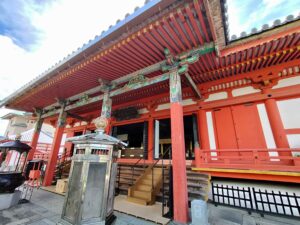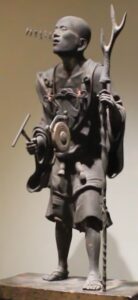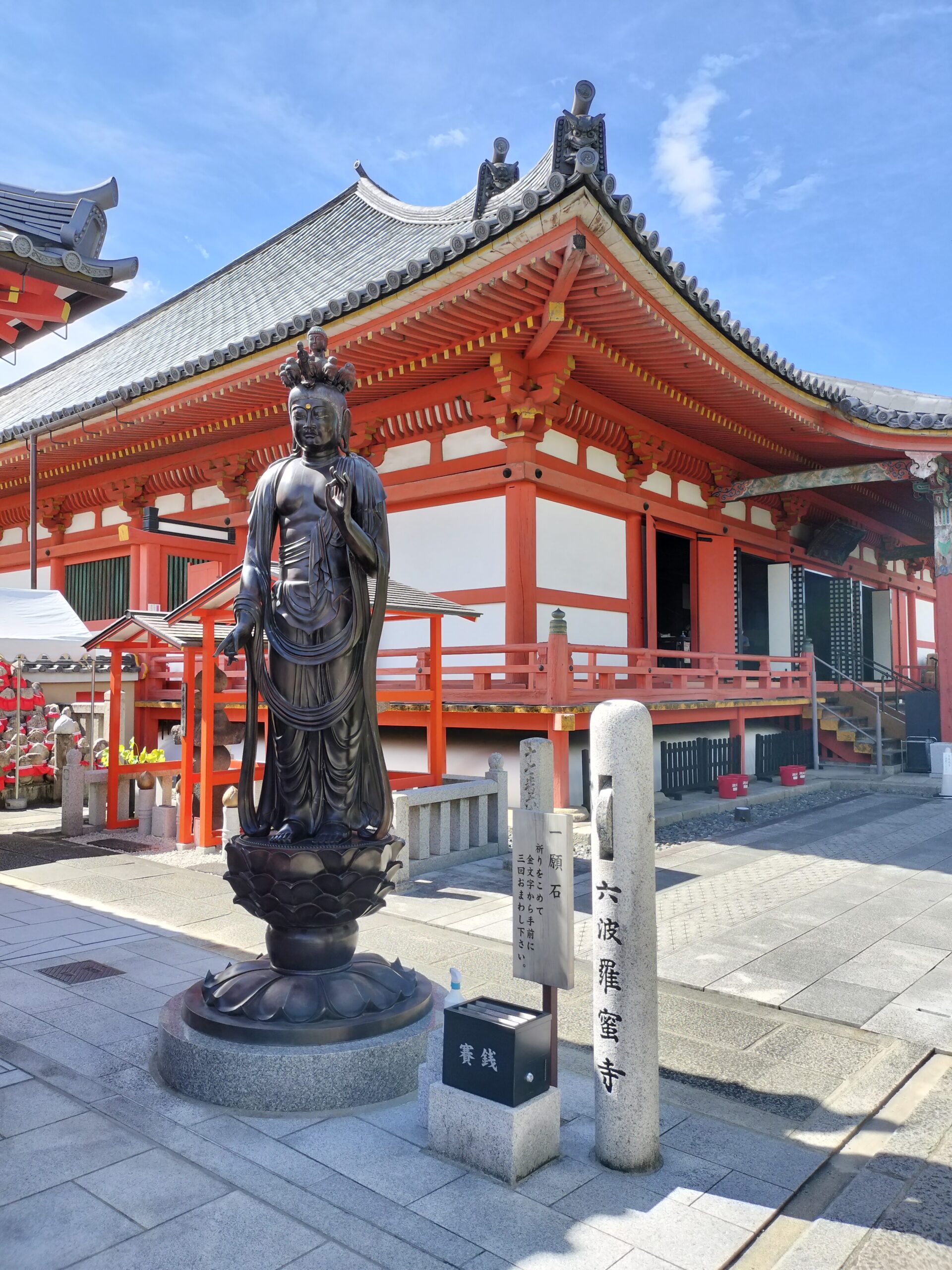Rokuhara-mitsu-ji Temple was established in 951 by Kuya Shonin who was a prince of the 60th Emperor Daigo. This temple is the 17th temple of Saigoku 33 Kannon temples. At a young age, the prince travelled the five home provinces and seven districts of ancient Japan to practice asceticism. Those provinces and districts were called Goki-Shichido in Japanese which was a name for the broader-based local administrative districts under the ritsuryo system. He became a priest at Owari-Kokubun-ji Temple was named Kuya. After he became a priest, he continued practice.
 The Main Hall of Rokuhara-mitsu-ji Temple
The Main Hall of Rokuhara-mitsu-ji Temple
He curved a statue of the Eleven-faced Kannon by himself praying for an end to the epidemic. He put the statue in a cart and drew the cart all over the city. In the Heian period, the virtuous Buddhist priest Kuya began nenbutsu-odori, a dance with an invocation to the Buddha.
 The Standing Statue of Kuya
The Standing Statue of Kuya
In Rokuhara-mitsu-ji Temple, there is a famous standing statue of Kuya which you can see it in a Japanese History textbook in schools. It is said that this statue was made in the Kamakura period, in the 13th century, by Kosho who was the 4th son of Unkei who is a famous sculptor of Buddhist statues in Japan and who made Kongo Rikishi Zo (statue of Kongo Rikishi (Nio)) flanked with Nandaimon gate of Todai-ji Temple in Nara Prefecture. The standing statue of Kuya expresses a traveling priest hanging a gong from his neck and holding a stick of cervus horn. His sunken cheeks and slim body are so real resembling a traveling priest over the city closely. Very unique point of the statue is six standing statues of Amidabha appearing from his mouth. This expresses an oral tradition that when Kuya shonin chanted Buddhist sutras, Namu Amida Butsu, six kanji characters of 南無阿弥陀仏(Namu Amida Butsu) became six standing statues of Amidabha.
After Kuya died, Rokuhara-mitsu-ji Temple became large scale by Chushin, who was one of best pupil of Kuya. In late Heian period, Tadamori Taira kept his armed services in Rokuhara-mitsu-ji Temple’s territory and since then, Kiyomori Taira and Shigemori Taira built their family’s houses in this area, over 5,200. In 1183, in downfall of the Taira family, the temple got a fire caused by war and all halls except the main hall burnt down. The temple survived during Kamakura, Muromachi, Azuchi-Momoyama and Edo period.
The current main hall was repaired in 1363. In 1969, the main hall was dismantled and thoroughly restored at a 1,000 year memorial event from initial opening. Since then, the main hall is colorful reminiscent of the past.
Numerous valuable cultural properties such as standing statue of Kuya are in safe keeping in newly built Reiwa-kan hall of Rokuhara-mitsu-ji Temple.




Comments